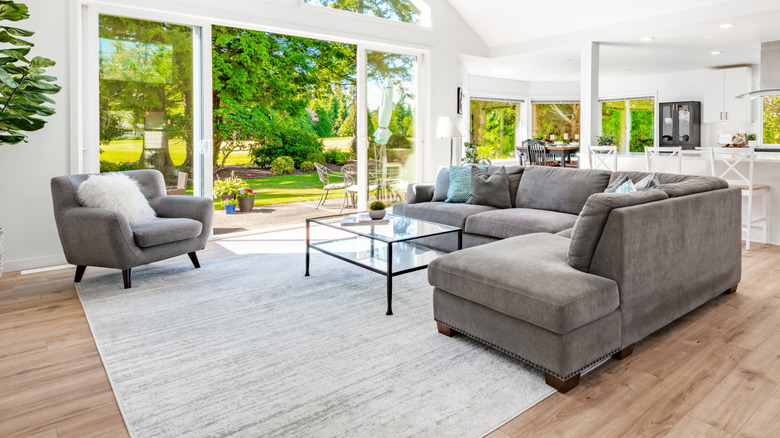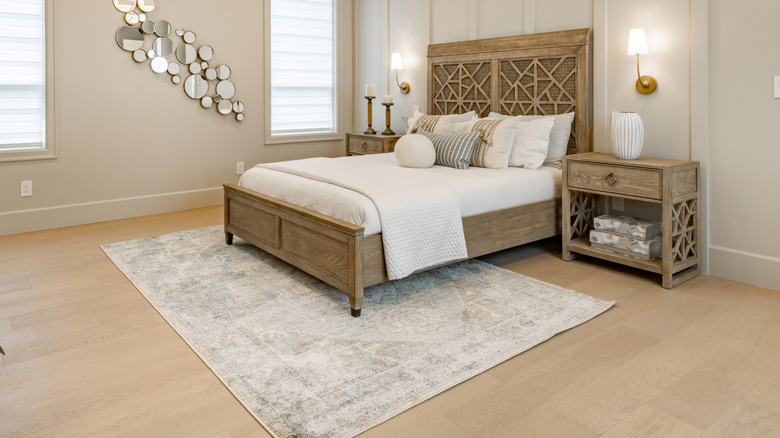Where Does Furniture Go On Area Rugs? Here's How To Decide
Placing an area rug might seem simple, until you're staring at your furniture, wondering where everything should go. Should the rug go under the entire sofa? Should it go under the front legs? Well, there's no definite answer. Many factors come into play — the room, the furniture, and the area rug itself, among others.
Before bringing furniture into play, there are some ground rules (pun intended) when it comes to area rugs. To begin with, bigger is better. A small rug can make a room seem off balance. The area rug you choose should ground the furniture around it. However, go too big and you'll risk overwhelming the room and making it appear smaller than it is. Another thing to take into account is traffic flow. For example, you'll want to avoid placing it near doorways — not only would it go against the clear footpath, but it can cause wear and tear, too. Also, an area rug should anchor the room and define your living spaces. This is especially important in open floor plans, where it can create visual boundaries between different seating zones. A rug pad is necessary, too.
When adding furniture into the equation, there are three ways you go about the layout. First, there's the all-legs-on setup. This is where all four legs of the furniture go on the area rug — ideal for large rugs. Next, you have the front-legs-on option that's common for medium-sized rugs. And then, there's the no-legs-on for small rugs, which is usually best to avoid as the rug can give an unwanted floating look — unless you're layering the area rug.
Choosing the right setup for each room
The ideal layout of furniture and area rugs varies from one room to another. In the living room, it depends on how large the space is. Suppose you have a small living room. Placing the furniture around the rug — with no legs on it — will make the room appear more spacious than it is. A coffee table on the rug can prevent a floating appearance. In the case of medium-sized living rooms, you'll want the front legs of the sofa to go on the rug, creating an overlap. If your living room is on the larger side, however, the entire sofa should be on top of the area rug. This is where the size of the rug matters, so when you're shopping for one, make sure to measure your seating area beforehand.
In dining rooms, there's one rule of thumb: the dining table and chairs — even when pulled out — should go on top of the area rug. You can determine how big a rug you should get by measuring the dining setup with the chairs pulled out. To prevent going off the rug when pulling out the chairs, you'll want at least 36 inches from the table to the edge of the rug. As for the bedroom, your bed needs to be halfway on top of the area rug. When placing the rug under the bed, make sure it's at a perpendicular angle and a few inches from the nightstand. It also has to extend at least 24 inches from the bed on the three sides. This means you'll want a 9-by-12-foot rug for king-sized, 8-by-10-foot for queens, and 6-by-9-foot for fulls.

